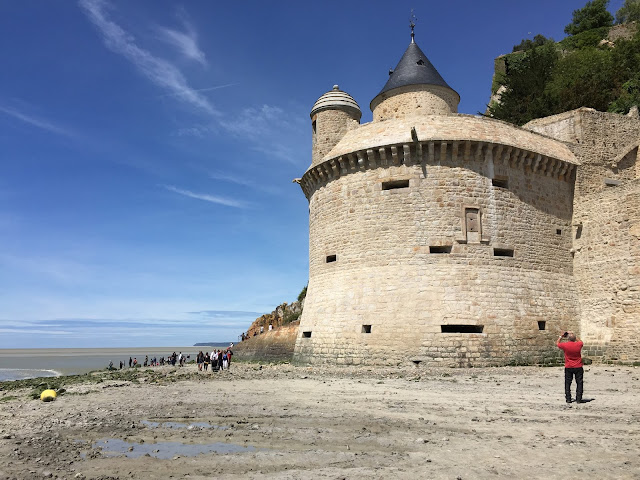I’ve been reflecting on my life in the garden these past few months. Who knew that I would fall in love with gardening as I have done? I have spent nearly every moment of my free time since May in the garden, with the exception of two vacations that took me away from it for three weeks. I could truly enjoy those wonderful vacations because I knew that our garden was in good hands. The nice thing about being part of a community garden is that the other gardeners will water your garden while you are away. There is always someone you can ask for help. In my case it has been the friendly Turkish women who have the neighboring garden.
One of my colleagues at work, a female pathologist who also likes to garden, told me that when she lived in England some years ago, she had visited a cemetery where there stood a gravestone with the inscription—“Here lies a gentleman and a gardener”. What a good way to be remembered. I can’t help but love it.
While I was in NY for two weeks, the pumpkin patch expanded even further, and now half of the pumpkins are large and orange. I’m guessing that by the end of September/early October, when the stems that attach them to the vines turn brown, they’ll be ready to harvest. Just in time for Halloween! In the meantime, my corn plants produced small corn cobs that I was able to harvest this past week. I learned that when the tassels turn brown, they're ready to harvest. I’m happy to say that they taste very good, even though they’re small. A friend of mine recently sent me a gardening book (a gardening bible is more like it), and I’ve been reading through it, hoping to get some tips for next year on how to get larger corn. One of the things I will ensure that the corn seedlings start off with next year is newly-composted soil. I think that will help their growth a lot. The Turkish women in the neighboring allotment garden have helped me harvest the large beans that hang from the bean plants they planted for me (more like small trees, at least in their garden). They taste very good, a bit different from the regular green string beans that we are used to. The broccoli plants are forming small broccolis, even though the plants themselves were stressed by the presence of the slugs that ate holes in their leaves.
All in all, I’ve planted and harvested string beans, Turkish beans, beets, snap peas, corn, and eventually I’ll be harvesting the pumpkins. Not bad for the first year of being a gardener. I will probably plant the same vegetables next year. As far as berries and fruit go, we’ve gotten quite a few strawberries, red currants and mulberries, and some black currants. We’ve planted raspberry and blueberry bushes so that next year we can expect a good yield of berries if we take good care of the plants. And I cannot forget the rhubarb plants; there is nothing you can do to them that will stop them from growing. I’ve cut them back twice now, and they’ve grown back each time. There is too much rhubarb and not enough rhubarb recipes!
I’ve learned a lot about what it takes to plant a lawn; there are many different types of grass seed, but all of them take root within five to seven days if the conditions are right. Once you sow the seed, you have to make sure that the ground stays moist. Luckily, that hasn’t been much of a problem this summer, since the weather has been unstable with mostly sunny days interspersed with a few rainy ones. I’m happy to report that I’ve managed to get a decent lawn, although it will be interesting to see how and if it survives the winter months.
The bees have been busy and happy this year, and the resulting honey was sold this past Sunday in the garden. It tastes very good—creamy and sweet—and I’m already using it in my tea. I love having the bees around me in the garden; they keep to themselves, buzzing about, and do not bother me at all. I’d like to think they are used to me by now. The lavender and sage (Salvia) plants that I put in for them are popular with them, as is the butterfly bush (Buddleja) with the butterflies. We don’t have Monarch butterflies, but we do have smaller varieties with lovely blue, gold and orange colors. The garden also has a resident badger; he has a mate and they now have five small badgers. I have not seen them (they are generally nocturnal animals), but apparently someone else has and word gets around. They dig up small holes in the lawn looking for worms to eat, otherwise you would not notice that they are there.
Next year we have plans to buy a small greenhouse so that we can plant tomatoes and other plants that need some protection from the elements. I won’t plant spinach or cauliflower next year, since the slugs ate them this year. I will plant more corn and the same amount of pumpkin plants. It will be interesting to see what the coming years bring. What I do know is that we were given a gift this year, and that gift has given me peace of mind and soul, a peace that was sorely needed. It’s also given my body a lot of aches and pains, but they don’t last, and in any case, they are a reminder of the hard work and love that go into a garden. I wouldn’t have it any other way. In my next post, I'll include some new photos of the garden.






















































